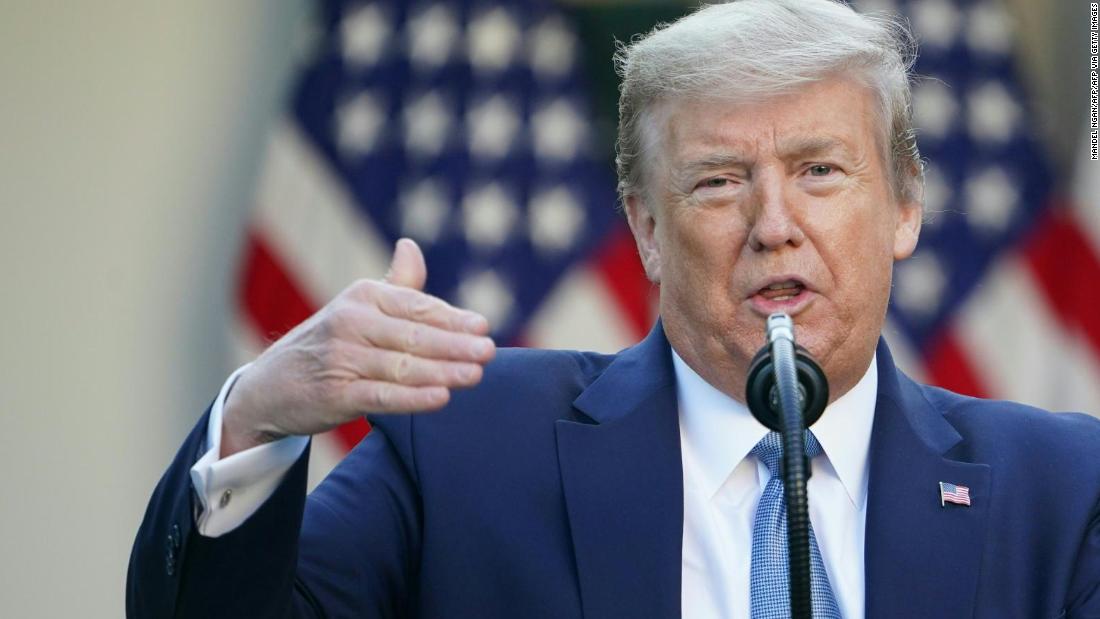Reopening: Trump set to unveil new guidelines
But Trump, eager to see a return to normalcy for housebound Americans, wants to provide at least a framework for how places can reopen despite warnings from all corners that testing capacity for coronavirus is still too small.
He is planning to brief the governors of all 50 US states on the new guidelines during a 3 p.m. ET teleconference.
Previewing the new recommendations, Trump said Wednesday the nation had “passed the peak on new cases” and was ready for a new set of federal recommendations on how to reopen certain parts of the country. He acknowledged that some states would be able to open more quickly than others. He insisted his chief concern was the safety and health of Americans.
Still, he said there were risks inherent in keeping the country shut down.
“There has to be a balance,” he said. “You know, there’s also death involved in keeping it closed.”
Officials said the new recommendations would mimic the social distancing guidelines the President announced in March and extended at the start of April: while not mandatory, they carry the weight of the federal government and the presidency.
Many states have already begun drafting plans on returning to normal, including two consortiums of states on the East and Wast coasts who have agreed on joint phased reopenings.
But those governors — along with public health experts and business leaders — all say that without widespread testing, Americans won’t be able to return to workplaces quickly because it will remain unclear who is well and who could still be spreading the virus.
In a phone call on Wednesday with some members of his newly formed business advisory council, industry leaders reiterated to Trump what public health experts and governors have been telling him for weeks: that there would need to be guarantees of ramped-up coronavirus testing before people return to work, according to one person briefed on the discussions.
As they weigh new guidelines on reopening the country, White House officials have poured over data on testing availability and hospital capacity, hoping to more narrowly devise a strategy to improve testing capacity where it still lags.
Trump said Wednesday it was governors’ responsibility to improve testing in their state, shrugging off responsibility for enacting the type of nationwide testing system he was touting only last month.
“We want the states to administer these tests, for the most part,” he said. “We want them to do it, we’re not going to be running a parking lot in Arkansas.”
But even among the nine states with the lowest case counts — Maine, Vermont, West Virginia, Nebraska, North Dakota, Montana, Wyoming, Alaska and Hawaii — not all governors have expressed an eagerness to quickly reopen. Some, such as North Dakota, still appear to be experiencing an increase in cases, meaning their peak could be weeks away.
The current federal guidelines on social distancing are not expected to be renewed when they expire on April 30. Officials said the White House would work closely with states to ensure reopening efforts are done safely and only when local outbreaks are deemed contained.
In finalizing the new plans, administration officials discussed issuing guidance to states on how to best assess whether they are ready to move away from social distancing, including creating specific thresholds for a reduction in cases and hospital capacity that would trigger a change in status.
Officials have also weighed options on how to reopen workplaces, including scaling up monitoring and recommending temperature checks; increasing the availability of testing, including antibody tests when they become available; new guidelines on how to best socially distance in workplaces, on public transportation and in public spaces like restaurants; and increased availability of masks or other face coverings.
Another idea discussed was recommending people who have recovered from coronavirus or test positive during the antibodies test — meaning they had coronavirus and likely have some form of immunity — go back to work wearing masks.
Officials have also weighed recommendations for schools, child care centers and summer camps, recognizing that returning to work may be difficult for parents if their children don’t also have a place to go.
![]()


